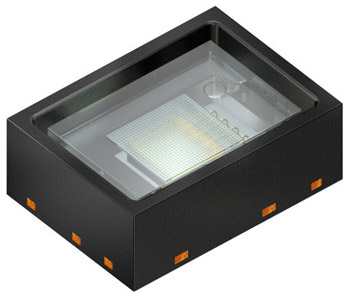- News
2 January 2019
Osram enters 3D sensing market with PLPVCQ 850 and PLPVCQ 940 VCSELs
Osram Opto Semiconductors GmbH of Regensburg, Germany has unveiled the PLPVCQ 850 and PLPVCQ 940 (available in first-half 2019) as the latest additions to its Bidos product family of vertical-cavity surface-emitting lasers (VCSELs).
Applications for the new VCSELs include machine vision or facial recognition, as well as object or architectural scanning that involves mapping an area in 3D and positioning virtual furniture and other items. The application helps to save time and money when designing spaces, the firm adds.
VCSELs combine the high power density and simple packaging of an infrared light-emitting diode (IRED) with the spectral width and speed of a laser. Unlike edge-emitting laser diodes, VCSELs and are much less sensitive to temperature fluctuations.

One of the most familiar applications for the technology is facial recognition for mobile devices. VCSELs illuminate the face with infrared light for cameras. The image captured by the camera is then compared to the image stored on the device. If they match, the device is unlocked. These 3D sensing applications can now use the PLPVCQ 850 and PLPVCQ 940 for time-of-flight (ToF) measurements.
The new VCSELs come with a compact black package measuring only 2.40mm x 3.30mm x 1.20mm. Depending on the application, the 2W component can be selected with the appropriate wavelength – either 850nm (PLPVCQ 850) or 940nm (PLPVCQ 940). The infrared beam is formed with the aid of a special micro-lens array to achieve what is claimed to be exceptionally homogeneous illumination of the field of view (FOV). Another benefit of the VCSEL chip from Osram subsidiary Vixar is the ease of installation, the firm adds.
Osram launches its first VCSEL
Osram acquiring VCSEL firm Vixar


